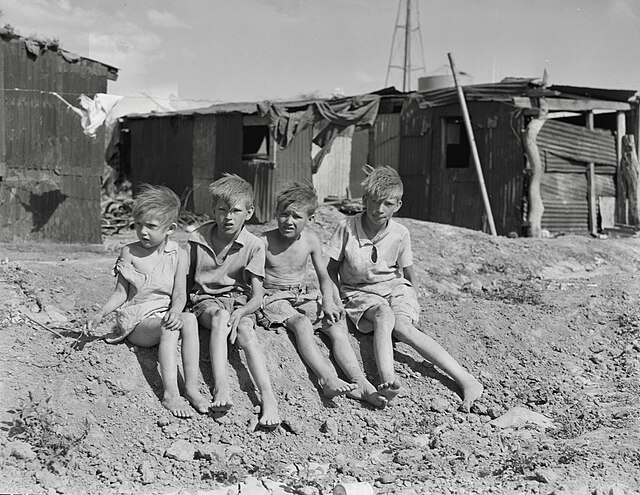Poverty in the United States
In the United States, poverty has both social and political implications. In 2020, there were 37.2 million people in poverty. Some of the many causes include income inequality, inflation, unemployment, debt traps and poor education. The majority of adults living in poverty are employed and have at least a high school education. Although the US is a relatively wealthy country by international standards, it has a persistently high poverty rate compared to other developed countries due in part to a less generous welfare system.
Tents of the homeless in San Francisco, California, May 2020
Rally Poor Peoples Campaign Washington DC
The "Basic Seven", a food plan developed by the United States Department of Agriculture.
A neighborhood of poor white people, Chicago, 1974
Poverty is a state or condition in which one lacks the financial resources and essentials for a certain standard of living. Poverty can have diverse environmental, legal, social, economic, and political causes and effects. When evaluating poverty in statistics or economics there are two main measures: absolute poverty compares income against the amount needed to meet basic personal needs, such as food, clothing, and shelter; relative poverty measures when a person cannot meet a minimum level of living standards, compared to others in the same time and place. The definition of relative poverty varies from one country to another, or from one society to another.
Children of the Depression-era migrant workers, Arizona, United States, 1937
An early morning outside the Opera Tavern in Stockholm, with beggars waiting for scraps from the previous day. Sweden, 1868.
Worlds regions by total wealth (in trillions USD), 2018
A Somali boy receiving treatment for malnourishment at a health facility








